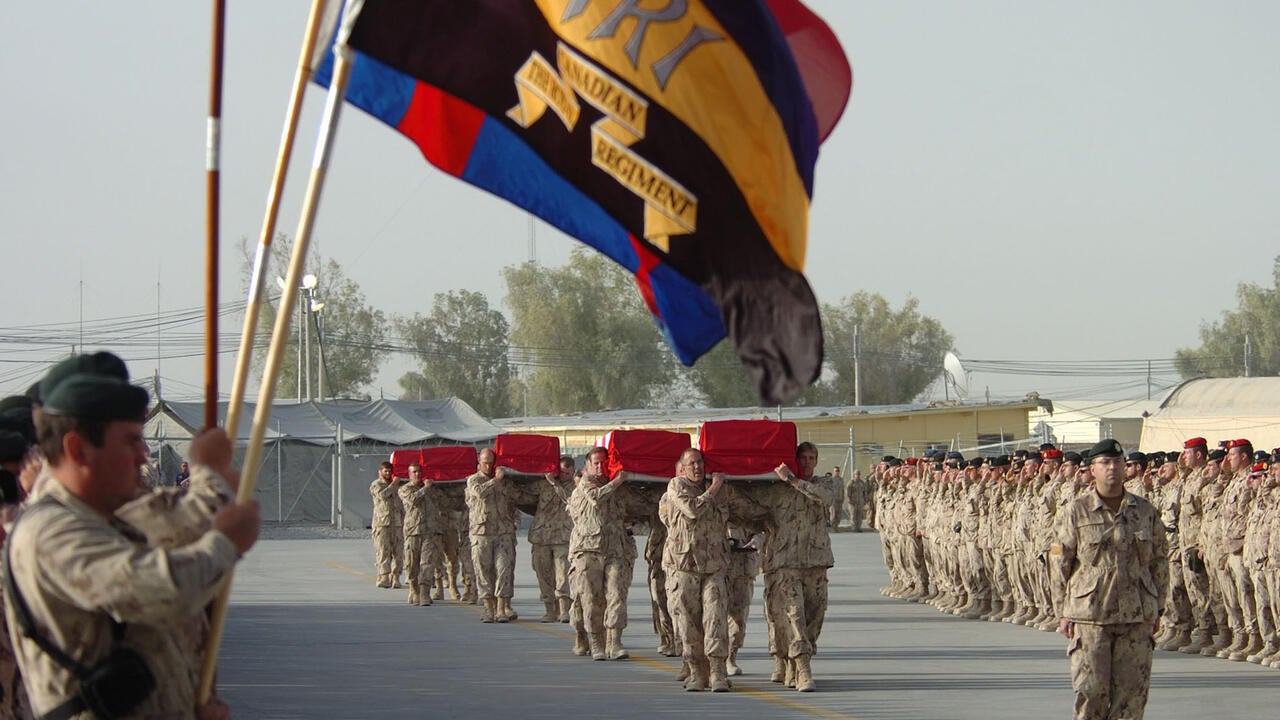
Come back
Ahead of Remembrance Day, Veteran Matt Austin (BA ’10) reflects on the personal cost of war.

Ahead of Remembrance Day, Veteran Matt Austin (BA ’10) reflects on the personal cost of war.
By Matt Austin (BA ’10) AlumnusNovember 11 is fast approaching: the time every year when Canadians stop on the eleventh hour of the eleventh day of the eleventh month and, for a moment, reflect on wars and conflicts of the past and those continuing on today.
For some, it’s a reflection on their family members who served, those who survived and those who did not. For others, it’s less personal, perhaps a reflection on the many Canadians and people around the world who fought and died in the pursuit of peace.
None of it, however, is more personal than to the veteran who stands at a cenotaph or sits in a wheelchair, or who sits alone at home on that day.
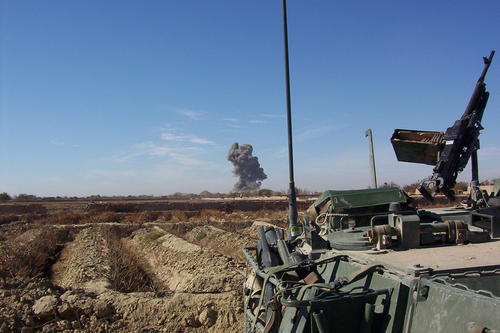
Canadian soldiers in Kandahar in 2006 saw some of the worst fighting since the Korean War.
War, regardless of the degrees of separation between the soldier and the enemy, is always personal. Different arguments have been made by notable authors on the subject — like American author Dave Grossman in his work On Killing: The Psychological Cost of Learning to Kill in War and Society — but the ease of pushing a button (compared to pulling a trigger) has its veil of separation removed when one considers the mental effects of those actions. The effects of pulling a trigger can be felt immediately by infantry and front-line soldiers, but with advances in technology, artillery soldiers can also watch in real-time as a live drone feed shows their rounds impacting on target. Social media and sites like YouTube are now littered with battle footage from drones and GoPros carried by soldiers recording the conflicts (sometimes on both sides of the fight). This allows soldiers to replay the event, save it on a hard drive and revisit it again and again.
Or, in many cases, stow it away and try to forget.
Every year, around 15 Canadian soldiers or veterans die by their own hand. For the duration of the time the Canadian Forces operated in Afghanistan from 2001 to 2014, 158 soldiers were killed overseas.
Since 2010, over 155 have died by suicide.
According to the 2018 Veteran Suicide Mortality Study published by Veterans Affairs, the suicide risk of men of all ages is 36 per cent higher than their non-military counterparts. For males at or below the age of 25 who were released as junior non-commissioned members, the rate is a startling 242 per cent.
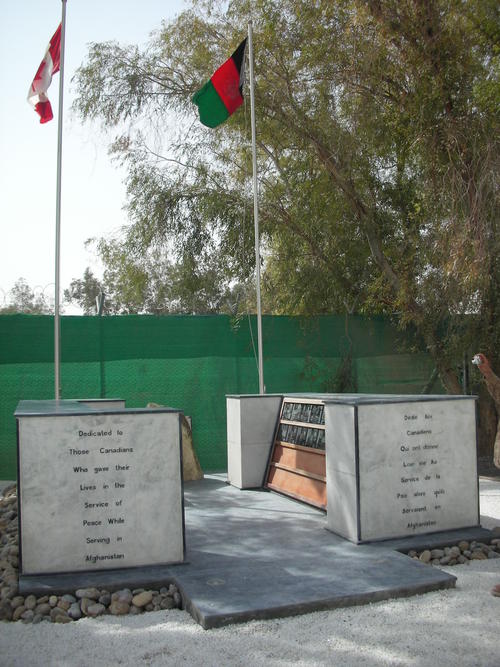
A memorial dedicated to Canadian soldiers in Kandahar Airfield.
The rate is approximately 3.5 times higher in males than females, though the suicide rate for females rises between years 11 and 20 after their release from the Canadian Forces.
Many veterans carry with them a few sets of stories. There’s a set of stories that they will tell their children or kids at a school. There’s a set they may share with their spouse or sibling. There’s another that they share in the company of close friends or fellow veterans and then a set that they don’t share at all. It’s this set of stories that sees the soldier or veteran depart the present, staring through their surroundings as they relive the sights, smells, sounds and feelings.
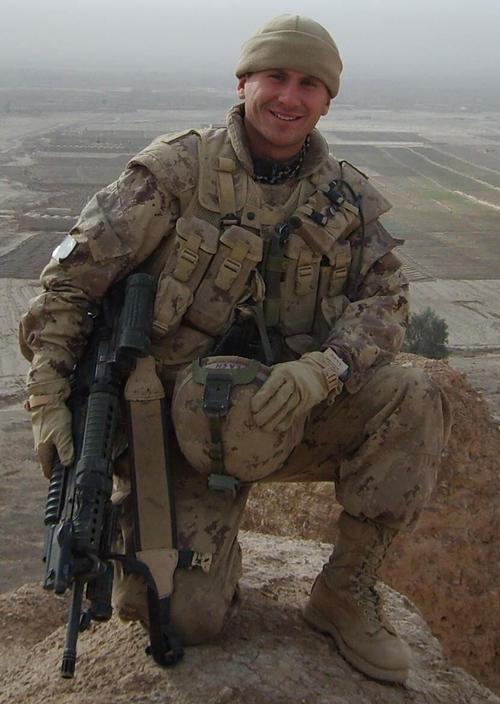
Matt Austin served on TF 3-06 and 3-08 in Kandahar Afghanistan as a combat engineer.
Once on a memorable occasion, far from home in a mess hall on base, I was having dinner with a friend. Something was said and I too returned to my time in Afghanistan. Staring deep into the table, it took my friend noticing to say while smiling, “Hey, come back to me, Matt.” We would go for long jogs around the base after hours and talk — he would speak about his traumatic moments working in corrections, I would share my memories of my tours in Afghanistan. Those jogs would come to help me significantly on my journey after my time in the Canadian Forces.
As Remembrance Day approaches this year, let’s focus on what can’t be seen — the hidden stories held by veterans that they live with every day of the year.
For veterans, every day is Remembrance Day. This year, when you message or call your friend or talk to a vet, ask if they’re doing okay. Though the wars are over, many veterans, despite being home, are still off in their minds, fighting in faraway lands. We need to do our part to bring them home. Canada needs them to come back to us.
Matt Austin served on TF 3-06 and 3-08 in Kandahar Afghanistan as a combat engineer. He currently is vice-president of Canada for Horizon 3 Ventures, which focuses on helping automation-centric startups in Waterloo region and the rest of Canada, offering office hours to striving entrepreneurs. His family office, Brigade, has helped over 60 soldiers and veterans by employing them in different projects across Canada and has been featured on CBC and CBC: The Current.

Read more
A winter holiday message from President Vivek Goel

Read more
Researchers awarded funding to investigate ecology, climate change, repatriation, health and well-being through cultural and historical lens
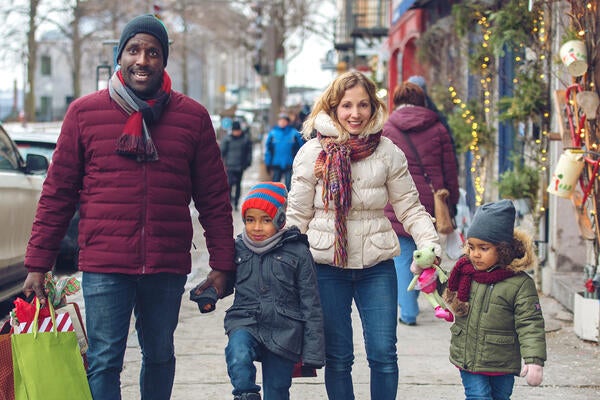
Read more
Shop Canadian this holiday season with festive porch plants, fashion-forward apparel, craft spirits and more from Waterloo entrepreneurs
The University of Waterloo acknowledges that much of our work takes place on the traditional territory of the Neutral, Anishinaabeg, and Haudenosaunee peoples. Our main campus is situated on the Haldimand Tract, the land granted to the Six Nations that includes six miles on each side of the Grand River. Our active work toward reconciliation takes place across our campuses through research, learning, teaching, and community building, and is co-ordinated within the Office of Indigenous Relations.